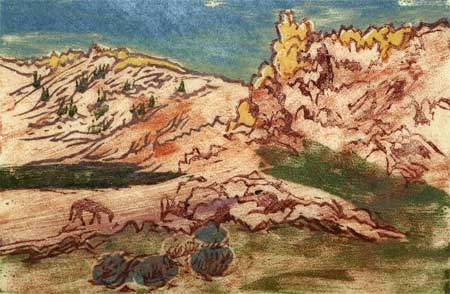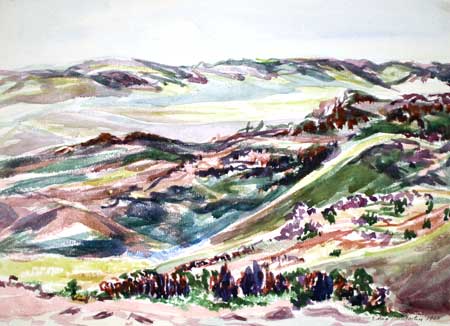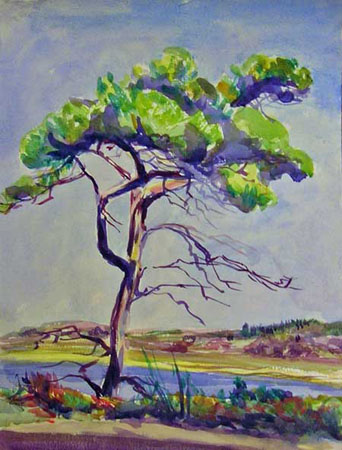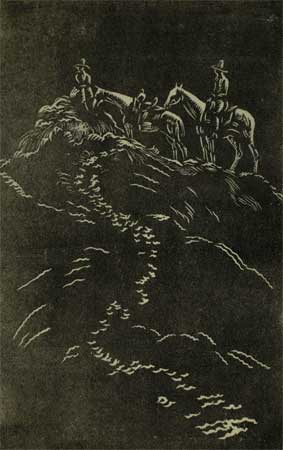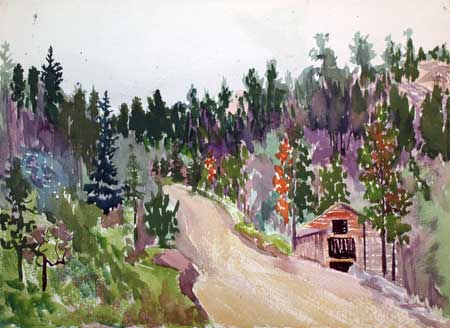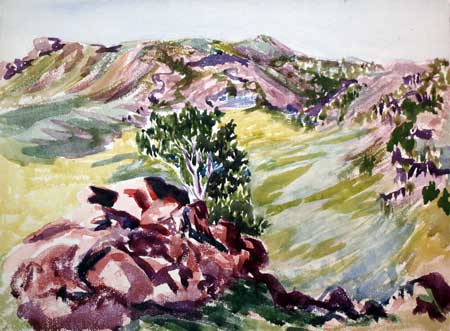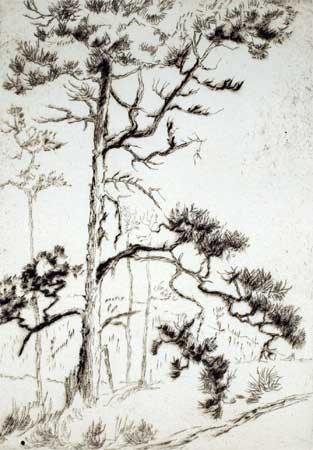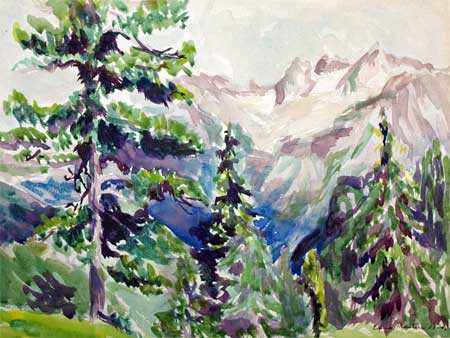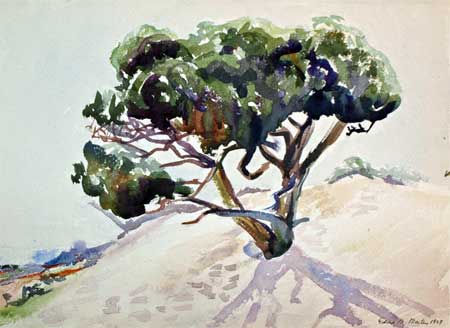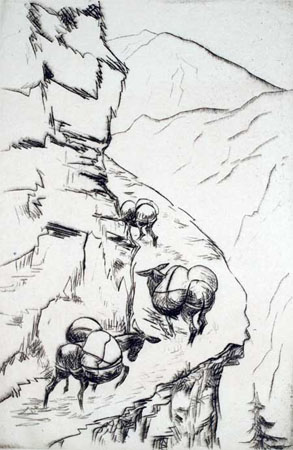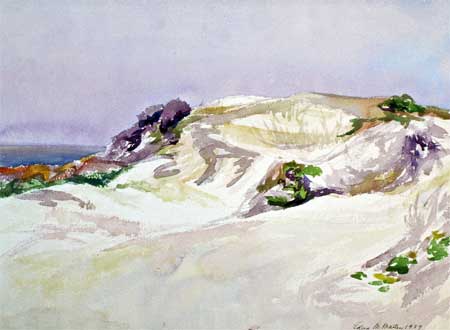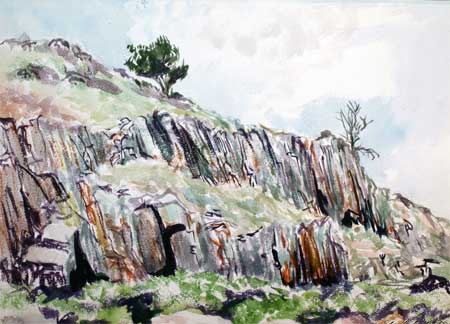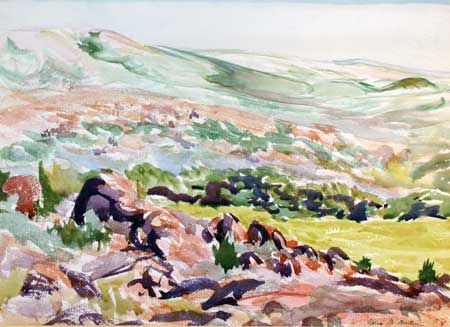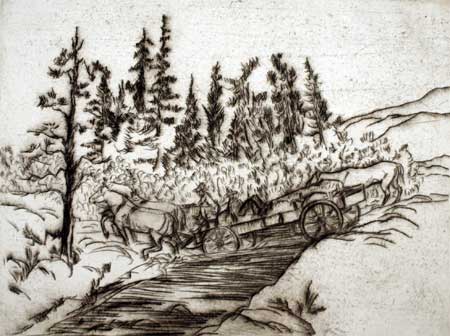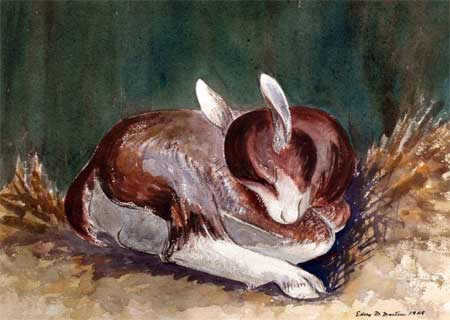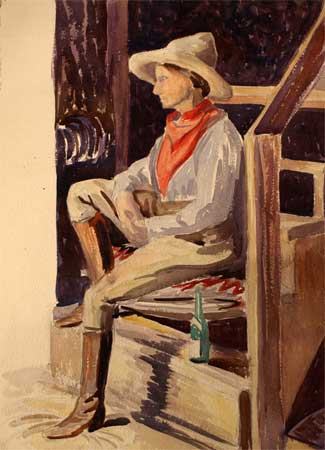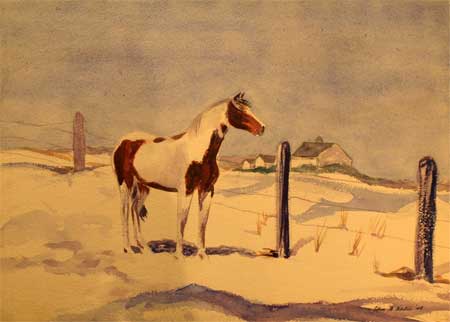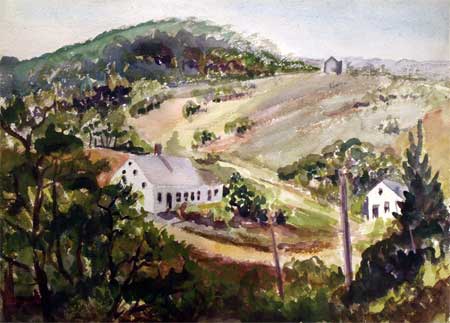Edna Martin
1896-1996
1896-1996
Price Range: $75 - $250
Etchings and watercolors from the Westward Bound Series (1929 - 1931) are available as well as black and white woodblock prints of animals from Martin’s working Seekonk Farm.
The Publication Edna Martin: Westward Bound, Prints from 1929 - 1931 is available and can be mailed upon request.
Westward Bound Series (1929 - 1931)
Martin’s love for the outdoors was evident throughout her life and greatly influenced her artwork. Her daily life included horseback riding, hiking, and managing her family farm and all of its animals. During the summers of 1929 and 1931, Martin traveled to Wyoming and produced her most successful body of work. She returned with watercolors and etchings that highlighted the integration of her abilities in draftsmanship, printmaking and composition.
Biography
At Edna Martin’s 100th birthday in 1996, most her friends remembered her as an independent spirit who still managed her Seekonk farm and had had a memorable career as an art teacher at the Lincoln School in Providence. In addition to the influence she had on the hundreds of students she taught during her fourty-four year teaching career, Martin also left her mark as an important professional artist in Rhode Island.
Martin graduated from the Rhode Island School of Design (RISD) in 1918, focusing on drawing and painting. She worked under Eliza Gardiner, a nationally recognized printmaker who was among the first Americans to exhibit color woodcuts in the New York-Berlin Photographic Exhibit in 1916. Upon graduating, Martin taught briefly at RISD as a Saturday art instructor until she secured a teaching position at the Lincoln School in 1924. With this job security, she launched into the most productive period of her artistic life.
Eliza Gardiner counted Martin as among the most talented of her students and pressed the young artist to use her fine compositional skills in the area of woodcuts. Using the birds, sheep, goats and horses on her family farm as her subjects, Martin created a few hundred successful woodcuts throughout her career. She preferred black and white print, although there are a few color prints in her portfolio. In 1931, the Providence Journal praised the unusual force of her woodcuts, commenting that she relied “on textures to carry her design [and] she slashed into the wood or the linoleum with gusto, letting the chips fall where they may. Consequently, the blocks have a virility that is almost masculine in character.” At a 1982 exhibit of her woodcuts at the Seekonk Public Library, the Sun Chronicle noted that her woodcuts of animals are “beautifully drawn, particularly in the animals’ expressions, reflecting the artist's love of animals.”
